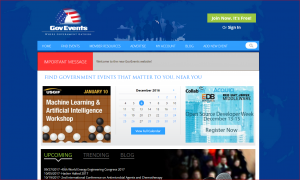 It's been a little over a year since we last looked at the state of virtual events. Since that post, streaming has become more mainstream with the launch of Facebook Live. The rise in mobile device usage and access to high bandwidth connections has fueled the viability of video in recent months. Its popularity -- and power -- is growing at an amazing rate thanks in part to Google and Facebook's efforts to promote video through prioritizing it in their algorithms.
It's been a little over a year since we last looked at the state of virtual events. Since that post, streaming has become more mainstream with the launch of Facebook Live. The rise in mobile device usage and access to high bandwidth connections has fueled the viability of video in recent months. Its popularity -- and power -- is growing at an amazing rate thanks in part to Google and Facebook's efforts to promote video through prioritizing it in their algorithms.
While every virtual event does not require video (many audio and slide-driven webinars are very valuable and popular), it is a dynamic way to hold the attention of virtual attendees. It also serves to broaden the reach of live events to an online audience.[Tweet "Virtual events can broaden the reach of live events to an online audience. #GovEventsBlog"] In 2016, the Super Bowl, the Democratic and Republican National Conventions and the debates were live streamed creating a second venue for people to watch and interact online. While the Federal events we list on GovEvents are nowhere near the scope of those events, there is a real need and opportunity for virtual events in the federal market. Continue reading




